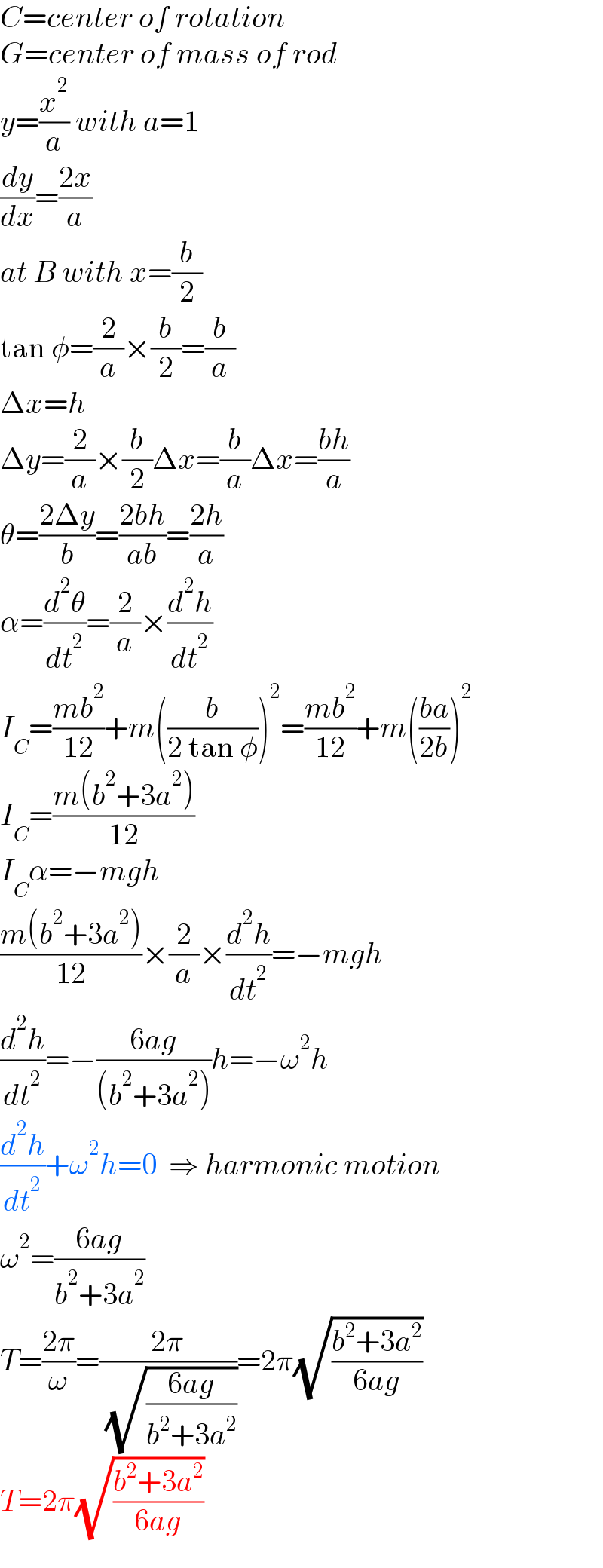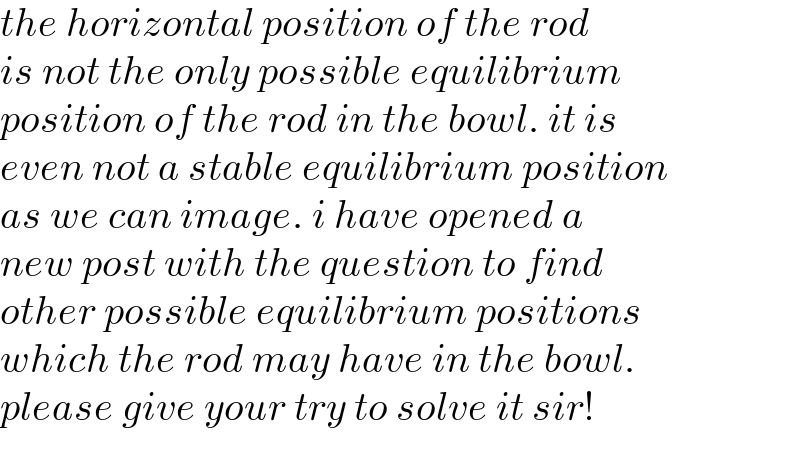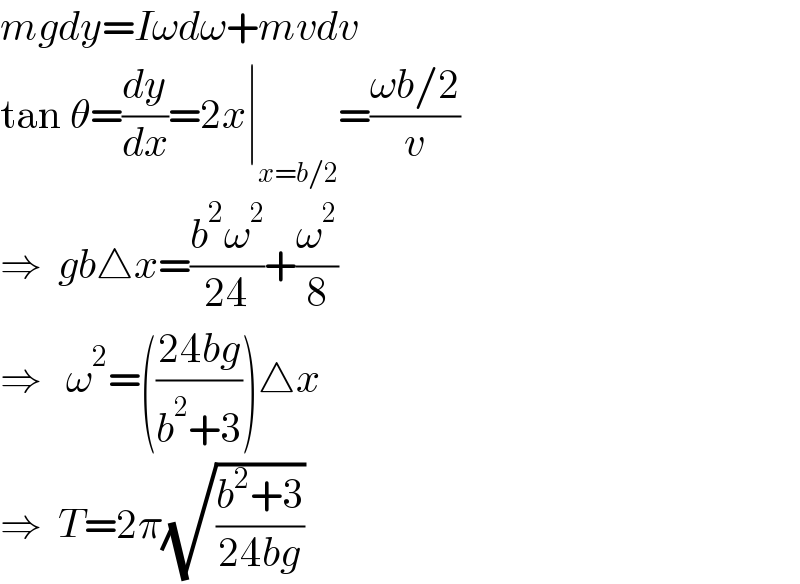
Question and Answers Forum
Previous in Oscillation and Waves Next in Oscillation and Waves
Question Number 164009 by ajfour last updated on 12/Jan/22

Answered by mr W last updated on 13/Jan/22

Commented by mr W last updated on 13/Jan/22

Commented by Tawa11 last updated on 12/Jan/22

Commented by mr W last updated on 13/Jan/22

Commented by ajfour last updated on 13/Jan/22

Commented by mr W last updated on 13/Jan/22

Answered by ajfour last updated on 13/Jan/22

Commented by mr W last updated on 14/Jan/22

